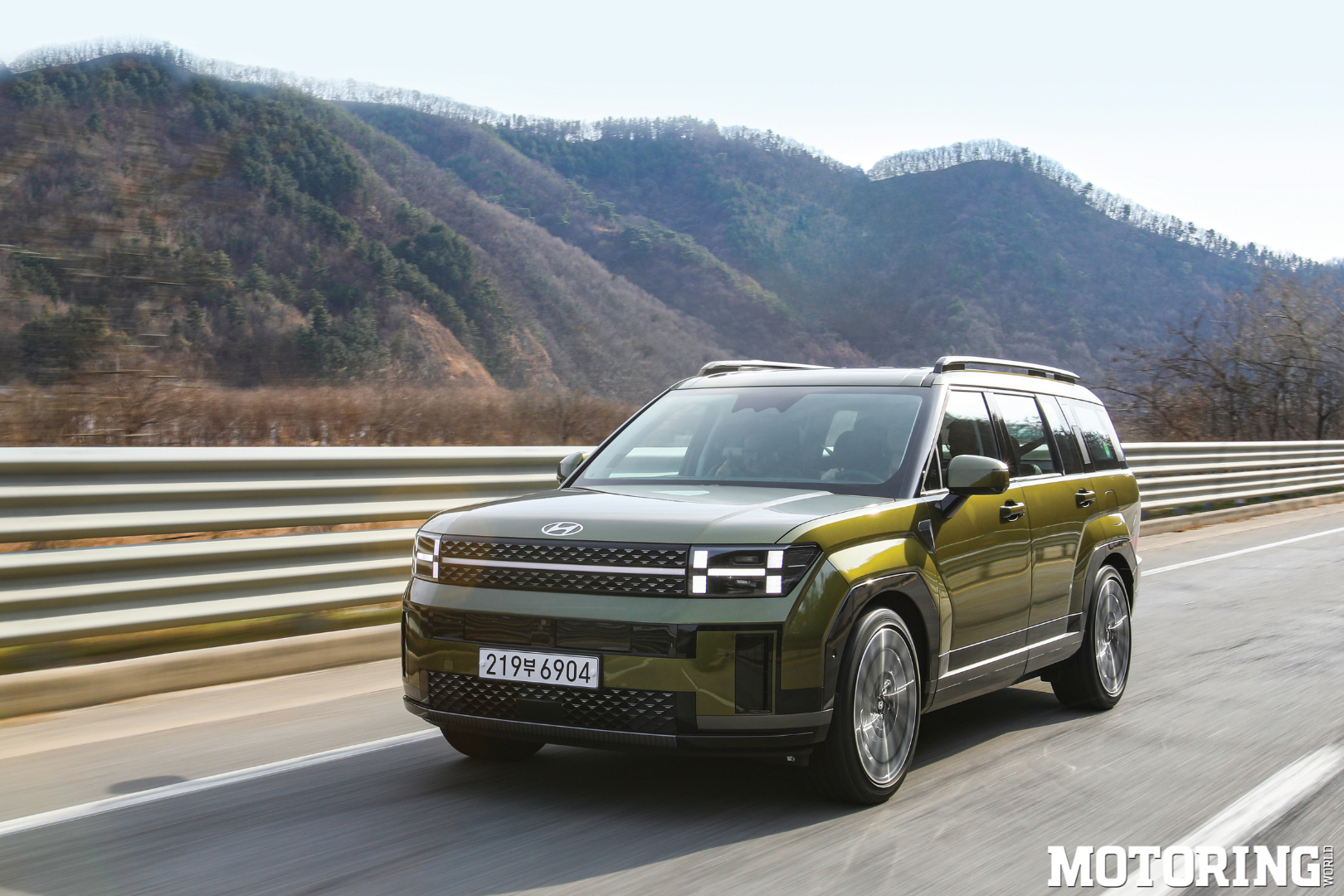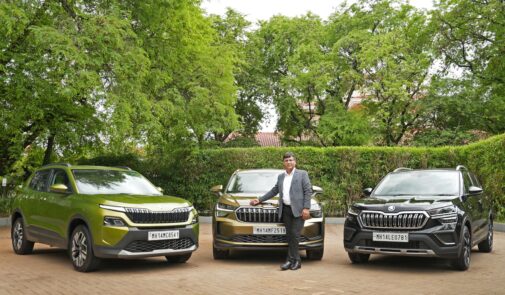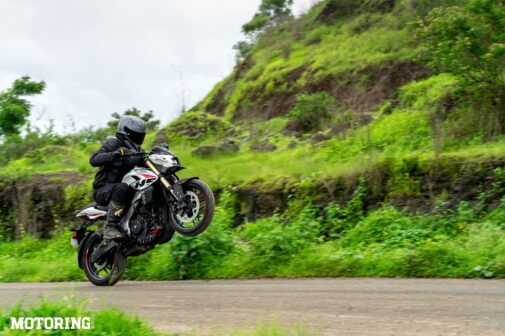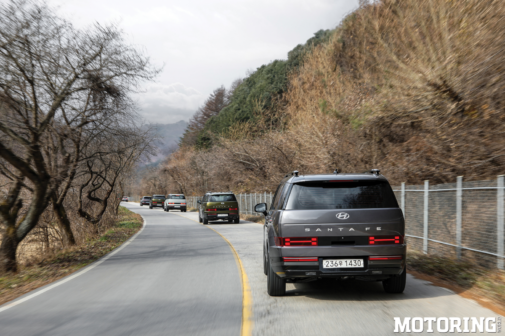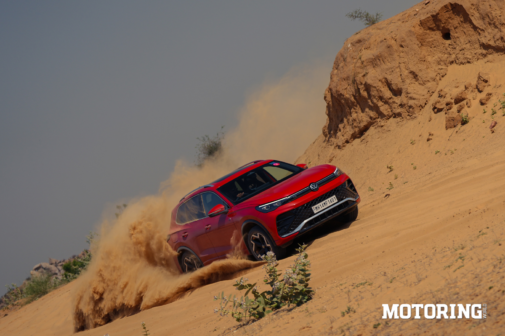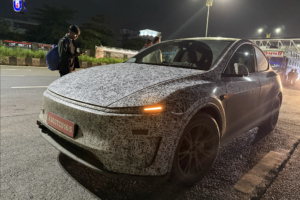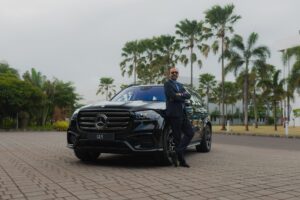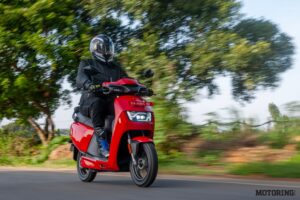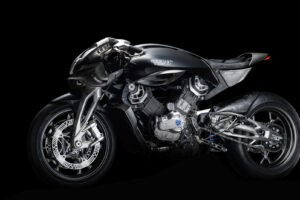Remember the Hyundai Santa Fe? I wouldn’t blame you if you don’t, since the car was made available in limited numbers in India and then discontinued — but not before all the allocated units were sold out. Clearly, there were enough takers for Hyundai’s flagship SUV (in India, anyway) back then, at a time when choice was limited. Now, however, you can’t fling a stone into the automotive market without hitting SUVs of every shape and size, which begs the question — will there still be takers for the latest Santa Fe if Hyundai decides to launch it here? Let’s try and find out.
In the launch photographs, the new Santa Fe looked like a gigantic box, and in the flesh, it looks like… a gigantic box. This is a box with a fair amount of good old North American character, though, since it’s been designed primarily for that market. It harkens back to the classic American SUVs of the 1980s, with very little by way of curves to be seen on its enormous body; in design terms, it’s clear that Hyundai tore up the older car’s template and threw it away.
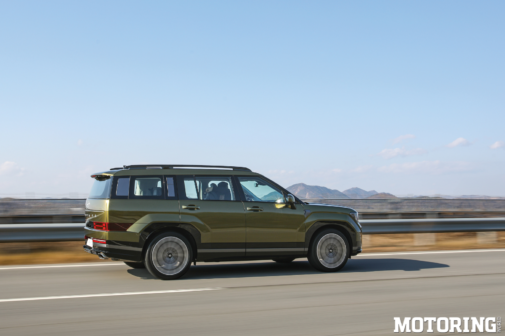
Its face is, well, in-your-face. The H-shape that we in India first saw on the Exter takes centre stage, with the headlights, tail lights and front bumper all shaped like said alphabet, and a nice connecting line between the headlights running through the grille; the active vents up front aid in air-flow, contributing to a drag coefficient of just 0.29, which is damn impressive for such a voluminous vehicle.
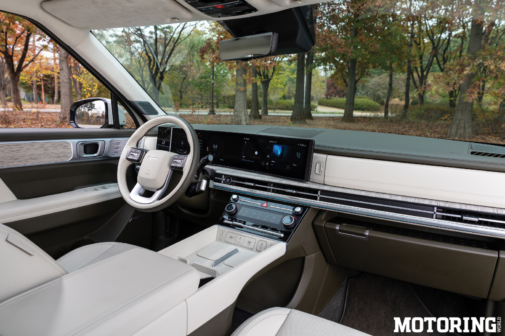
The profile keeps it simple (and keeps it Defender, if we’re being honest with each other), with minimal lines and flourishes, large wheel arches and a ‘floating’ roof design; a cool touch is the grab handles integrated into the C-pillars, which help when you need to step on the rear wheels to access the car’s roof. The rear will certainly polarise opinion — it’s a large slab, any which way you play it, but I think its weirdness fits in with the rest of the car’s bulk. There’s no doubt that the Santa Fe has loads of presence, which should go down well in places north of the Vindhyas.
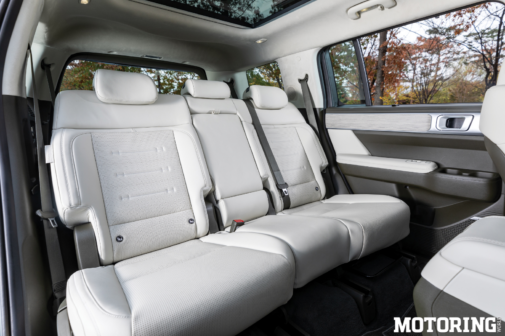
Hyundai has been cranking out some top-notch interiors lately, and the Santa Fe is no different. Granted, the dashboard and steering wheel are very Land Rover-like, but that aside, this is a large, very comfortable and feature-filled space. The view from the driver’s seat is commanding, given the size of the windscreen, and the controls are all extremely well built and laid out (I particularly liked the chrome-tippedd drive selector). There are enough storage spaces to satisfy a family of squirrels, and the twin smartphone chargers in the centre console are genuinely useful. The curved instrumentation and touchscreen unit are also a pleasing sight, being of high resolution and angled just right for the driver.
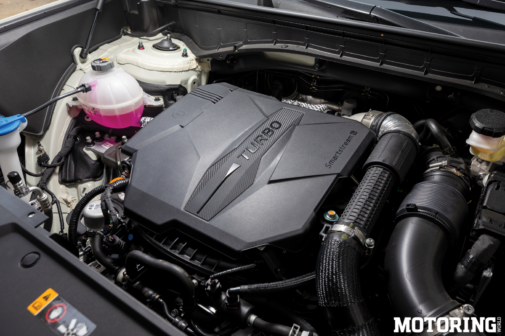
Seating comfort is excellent all round, with the 2nd row sure to be a sought-after spot amongst family members, because you can slide them and recline the backs. The 3rd row will fit two adults in reasonable comfort, too, and if you’re in the mood for some serious cargo hauling, folding both rows down will transform the Santa Fe into a cavern on wheels, with 1,625 litres of storage space. In terms of safety features and tech, Hyundai has thrown the entire sink at the Santa Fe, with the laundry list including things like lane keeping, smart cruise control, driving assist, blind-spot warning, emergency braking and so forth. The previous model received a 5-star crash test rating, so it’s reasonable to expect that this one will, too.
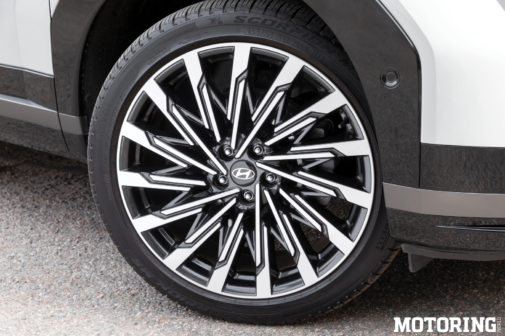
Hyundai will sell the Santa Fe with four engine options in various markets, and the version I got to drive in South Korea was equipped with a 2.5-litre, turbocharged inline-four, paired with an 8-speed DCT; this engine makes 277 bhp and 43 kgm of torque. Since the new Santa Fe is considerably larger and heavier than the older model, the engine has its task cut out, and it does its job about as well as you’d expect. Off-the-line acceleration obviously isn’t very brisk, what with all that bulk, but once it gets rolling, the powerplant is a pleasantly capable one. It’s very refined, for one thing; I could barely hear it ticking over at lower revs, although some amount of engine noise was evident under hard acceleration. In the conditions in which I drove it — city traffic, freeways, some B-roads — the engine was tractable, and the gearbox made sure the revs were smoothly matched at all times. That said, the Santa Fe is not the SUV to get if you have any real sporting preferences; look toward the Germans for that kind of stuff.
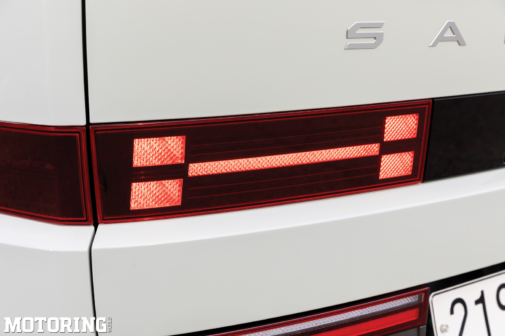
Hyundai has made some changes to the Santa Fe’s suspension, although its main components are from the older model. Overall stiffness has been improved, a variable-frequency damping system has been added and some steering components have been tuned further. On the road, the Santa Fe prioritises comfort above all else. The suspension soaks up bumps and imperfections with admirable aplomb, and the handling, while competent, is no match for sharper competitors — think luxury liner, not sports car. Also, it hasn’t been set up for hardcore off-roading, although some semi-diffi cult trails should be well within its capabilities.
Now to the big question — will Hyundai ever bring this car to India? If it does, it’ll cost at least ₹ 50 lakh, putting it up against everything from a Toyota Fortuner to a Mercedes-Benz GLA and a BMW X1. At one point, a Hyundai at that price point would have been laughed at, but the Ioniq 5 has shown that people are willing to pay top rupee for a Korean car if they’re convinced about its abilities. If you prioritise comfort, space and a tech-heavy cabin, with some arresting looks thrown in, then this SUV is quite a left-of-field choice. However, if you want driving thrills, prefer a simpler tech interface, or need a truly cavernous third row, there are other options that are more suitable. Regardless, there’s little doubt that the new Santa Fe is a big step forward for Hyundai, offering a great blend of style, comfort, and practicality. Whether it’s the right fit for you is a decision you’ll have to make after taking it for a spin (if it ever comes here, that is).
Photos by Hyundai
AUTODATA
Hyundai Santa FePOWERTRAIN
Displacement:
Max Power:
Max Torque:
Transmission:
2,497cc, 4 Cylinders Inline
277 bhp@5,800 rpm
43 kgm@1,700-4,000 rpm
Automatic 8-speed DCT
TYRES
F/R: 245/45 R21
DIMENSIONS
L/W/H (mm):
Wheelbase:
Kerb Weight:
Fuel Capacity:
4830/1900/1780
2815 mm
2155 kg
67 litres
PRICE
₹50 Lakh (estimated)





